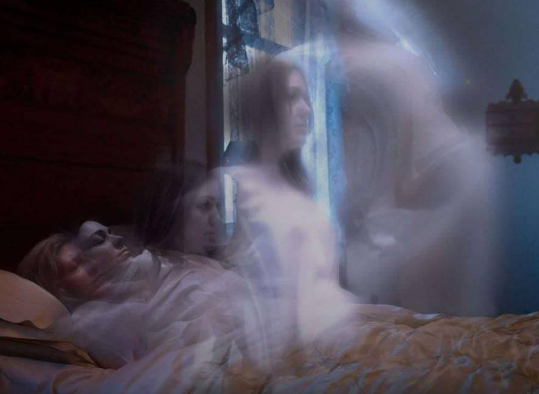When a loved one approaches the final hours of life, their body undergoes significant changes. While many of these changes occur gradually over weeks or months, some become more noticeable in the last 24 hours. One of the most common and often unsettling phenomena observed during this time is the “death rattle”—a distinctive noise that signals the body’s final stages of shutting down.
Though this sound can be distressing for family and friends, it is essential to understand that it is a natural and painless part of the dying process.
What Is the Death Rattle?

The death rattle is a gurgling, rattling, or wet-sounding noise that occurs when a person nearing death loses the ability to clear secretions from their throat. As the body weakens, swallowing becomes difficult, and saliva, mucus, and fluids accumulate in the airways, producing the characteristic sound when breathing.
Medical professionals emphasize that, although the noise may be unsettling, it does not indicate discomfort or suffering for the dying individual. Instead, it is simply a physiological response to the body’s natural decline.
Hospice nurses and palliative care experts, like Nurse Julie, explain that the death rattle is often accompanied by fluctuations in body temperature, slowed circulation, and changes in breathing patterns—all of which are normal at the end of life.
What Does the Death Rattle Sound Like?
The sound of the death rattle can vary from person to person. Some describe it as a faint, snoring-like noise, while others compare it to a louder, gurgling or crackling sound. It often grows more pronounced as breathing slows and secretions build up.
Common descriptions of the death rattle include:
- A low, rattling noise during exhalation
- A wet, bubbling sound that intensifies over time
- A faint groaning or snoring-like breathing pattern
Though it can be difficult for loved ones to hear, medical research indicates that the dying person is not aware of or disturbed by the sound. Studies show that those experiencing the death rattle typically remain unconscious or in a state of deep relaxation.
How Long Does the Death Rattle Last?
The onset of the death rattle usually signals that death is near, with most individuals passing within 24 to 48 hours. Research suggests that, on average, the time from the appearance of the death rattle to death is about 25 hours.
However, the duration can vary based on the person’s overall health, the presence of hospice care, and the specific circumstances of their decline. Individuals in hospice settings may experience a slightly longer duration due to comfort-focused medical interventions.
What Can Be Done to Ease the Death Rattle?
While the death rattle is a natural part of the dying process, there are ways to reduce its intensity and help family members feel more at ease. Though it cannot always be completely eliminated, simple techniques can help minimize the sound and provide comfort.
Positioning and Drainage
- Gently turn the person onto their side to encourage secretions to drain.
- Raise the head slightly with pillows to promote better fluid movement.
- Keep the mouth slightly open to allow secretions to escape naturally.
Mouth Care and Hydration
- Use damp swabs to moisten the lips and inside of the mouth.
- Avoid excessive fluids, as they can increase secretions.
- Apply lip balm to prevent dryness and discomfort.
Medical Interventions
- Some medications, such as anticholinergic drugs, can help reduce saliva production.
- Suctioning may be used in limited cases, but it is generally not recommended as it can cause discomfort.
- A quiet, calm environment can help ease anxiety for loved ones witnessing the process.
While these methods can help reduce the intensity of the death rattle, it is important to remember that it is a normal and expected occurrence.
Understanding the Natural Process of Dying

For many, witnessing the final moments of a loved one can be overwhelming. The body undergoes profound changes, including altered breathing patterns, reduced circulation, and a gradual loss of consciousness.
Signs that indicate death is near include:
- Irregular or shallow breathing
- Periods of apnea (pauses in breathing)
- Cold hands and feet due to reduced circulation
- Weak or absent pulse
- Loss of bladder and bowel control
These changes are part of the body’s natural transition, and hospice teams provide guidance and reassurance to families navigating this difficult time.
Finding Comfort in the Final Moments
Although the death rattle may sound alarming, it is crucial to focus on the emotional and spiritual aspects of a loved one’s final hours. Being present, offering comforting words, and providing gentle touch can create a peaceful atmosphere.
Loved ones should remember:
- The person is not in pain or distress.
- They can still hear and sense presence, even if unconscious.
- Playing soft music or speaking in a calm voice can be soothing.
Understanding the death rattle and its role in the dying process can help families feel more prepared and less anxious. While it may be difficult to witness, it is a natural sign that the body is completing its journey.
Conclusion: A Peaceful Transition

The death rattle is a common occurrence in the final hours of life, signifying that the body is slowing down. While the sound may be distressing to hear, it is a normal part of the dying process and does not indicate suffering.
By learning about the death rattle and other end-of-life changes, families can focus on providing love, comfort, and presence in their loved one’s final moments. Understanding what to expect can bring reassurance and peace during this deeply emotional time.
Though death is never easy, embracing it as a natural transition allows us to approach it with acceptance, love, and dignity.


